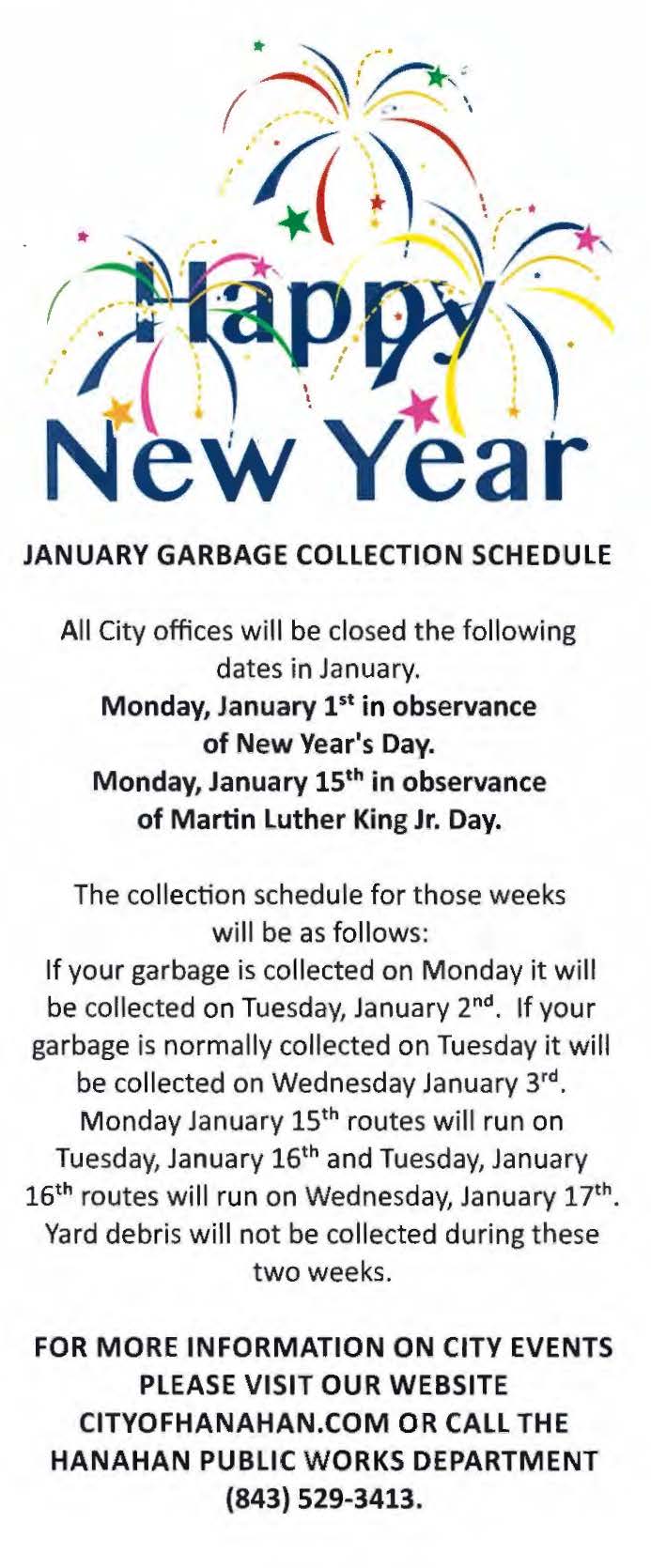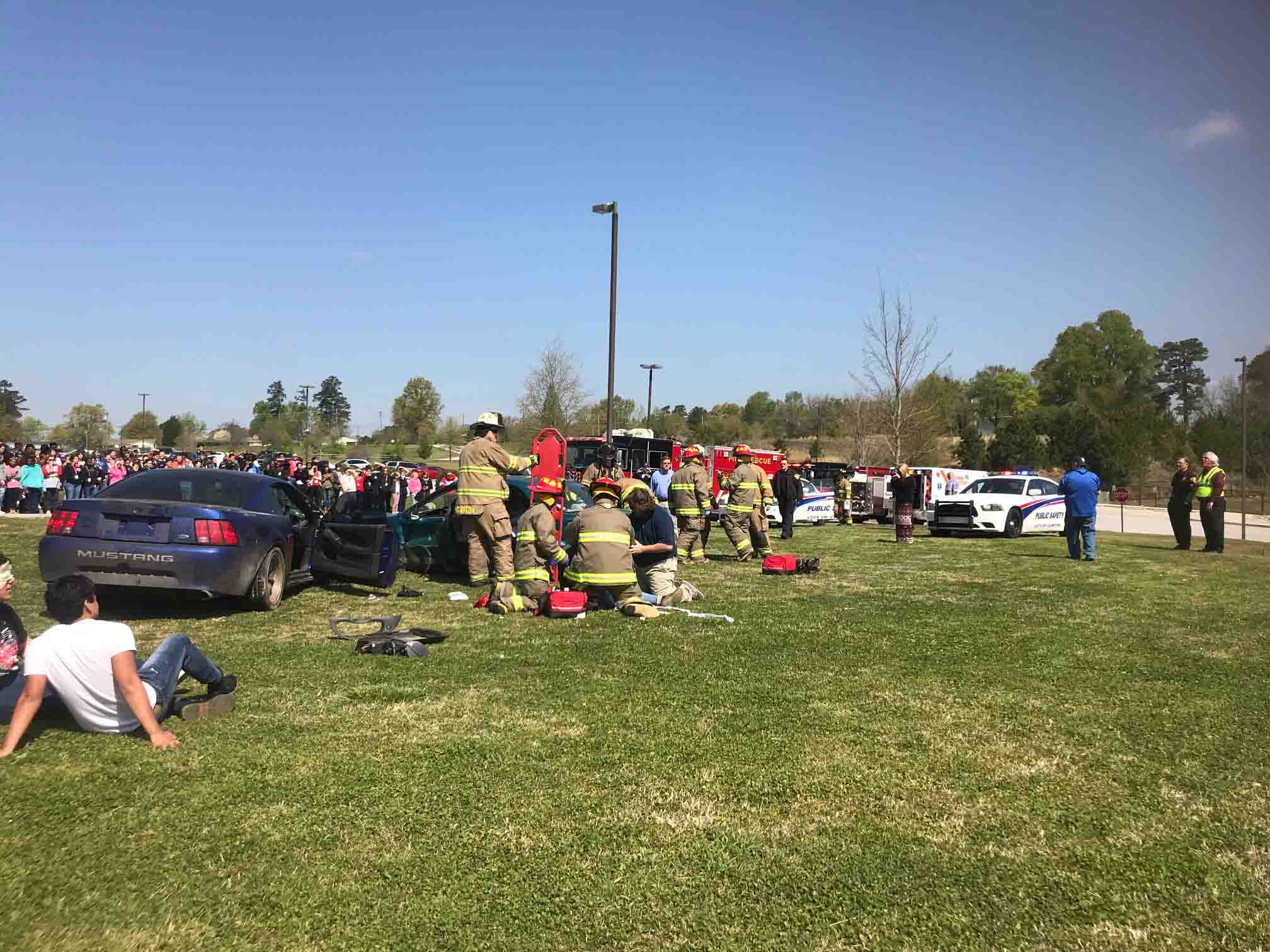In the City of Hanahan, sometimes a trash can is more than a trash can — it's an invitation.
The lesson: Doing things a little outside the ordinary can pique residents' interest.
Cities and towns are showing that tools of engagement come in all forms — a sizzling hotdog, an unusual meeting location, an unexpected invitation and, in one city's case, even some fake blood. Cities have used those tools and others to gather residents' concerns, build a sense of place and deliver potentially lifesaving information.

The City of Hanahan spreads the word about city events by attaching a
flier like this one to trash cans. Photo: City of Hanahan.
In Hanahan, the city invites residents to events by promoting them on the back of the 3 ½ by 8 ½ "Talking Trash Can" fliers that sanitation workers place between the lid and the can. One side of the flier communicates trash collection changes during holiday weeks. The other side invites residents to the city's movies in the park series, senior center events, festivals, youth programs through the recreation department, and police and fire department open houses.
The key to this type of resident engagement is to be selective about which types of events and messages to send out and to carefully limit how often the city uses the fliers. In Hanahan's case, the invitations run about eight times per year.
"We do get promotional requests from residents occasionally, but we don't typically put those out unless it's going to be city event," said Randy Moneymaker, Hanahan public services director.
"Everybody is coming to grab their can and pull it back to their house," he said. "We know we are going to reach 5,500 to 6,000 houses. They are able to grab that and catch up on information."
The fliers help the city reach all demographic groups, not just the ones that are glued to their smartphones.
"In today's society with social media, there are multiple avenues to get messages out," said Moneymaker. "But not everyone uses that. So we're still able to give someone a hard copy of something that they can grasp and read."
The approach is working. Take it from the residents who call the city to ask about specific events featured on the back of the fliers.
"We do 'Movie in the Park' at our amphitheater four to five times a year," said Moneymaker.
"People show up and say, 'I saw it advertised on my trash can.'"
How to engage high school students
It can take a lot to get through to teenagers. So public safety officials for the City of Clinton teamed up with Greenville Health System, Laurens County and various government agencies to send a lifesaving message to area high school students.

The City of Clinton partnered with Clinton High School and other agencies to teach
teens about the dangers of distracted driving. Photo: Clinton High School.
Mock distracted-driving crashes — complete with fake blood and bandages for the student "victims" and helicopter rides over a baseball field courtesy of Greenville Health for students — can leave an impression on young people, said Clinton Fire Commander Scott Shiflet.
"You can tell by the expressions on their face that they were visibly affected by it," he said. "We wanted it to be as realistic as possible so it would catch their attention."
This year marked the third time the city performed the accident re-enactments with area students. The effort calls for a lot of partners and intergovernmental cooperation.
"We also worked with the victims advocate to simulate working with the family of the ones in the wreck," said Shiflet. "We tried to incorporate everyone we could, even Highway Patrol. They came out before we did the re-enactment and gave a presentation in the gym to talk about the hazards of distracted driving."
A show-and-tell approach also helps convey lifesaving information in the City of Hardeeville and Town of Bluffton.
The two departments teamed up in June to put on a burn-house demonstration to impress upon residents how quickly a fire can consume a structure if it does not have a sprinkler system built in.
"We can go out and speak, and we can show videos and show pictures of things, but until you see what happens in real time with real elements, you don't quite understand the realism of how fast fire develops and grows," said Joey Rowell, fire marshal for the City of Hardeeville.
"Whenever we do the burns, we do one side that's unsprinkled (does not have a sprinkler system installed) and one side that is sprinkled, and you'll see how fast the fire consumes the unsprinkled room. … It shows you that you don't have a lot of time to get out of the house."
A hot meal, friendly location
Fortunately, not all messages require dramatic re-enactments. For the City of Manning, officials delivered a subtler message of accessibility and government responsiveness.
At a recent SC Community Development Association meeting, Scott Tanner, city administrator, said Manning had found success in holding a public meeting about the terms of a Community Development Block Grant at a location other than Manning City Hall.
"A lot of times we're guilty of having the public meetings and hearings at City Hall," he said. "But there are a lot of folks out there, especially in distressed neighborhoods, who don't want to come to City Hall and they won't come to City Hall."
Manning officials invited residents to attend a meeting and enjoy hotdogs at the Brotherly Love Lodge.
"Several of these folks came out, got a hotdog and left. But in order to get the hotdog, you have to sign the sign-in sheet," said Tanner. "Seriously, if you want to get folks involved, go out into their neighborhood and serve food."
